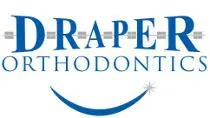Orthodontics FAQ
What is orthodontics?
Orthodontics is the branch of dentistry that specializes in the diagnosis, prevention, and treatment of dental and facial irregularities.
What is an orthodontist?
An orthodontist is a dental specialist that has not only completed college and 4 years of dental school, but has also completed an additional 2 to 3 years residency program accredited by the ADA of advanced education in orthodontics.
What are some signs that braces may be needed?
1. Upper front teeth protrude excessively over the lower teeth, or are bucked
2. Upper front teeth cover the majority of the lower teeth when biting together (deep bite)
3. Upper front teeth are behind or inside the lower front teeth (under bite)
4. The upper and lower front teeth do not touch when biting together (open bite)
5. Crowded or overlapped teeth
6. The center of the upper and lower teeth do not line up
7. Finger- or thumb-sucking habits which continue after six or seven years of age
8. Difficulty chewing
9. Teeth wearing unevenly or excessively
10. The lower jaw shifts to one side or the other when biting together
11. Spaces between the teeth
What are some possible benefits of orthodontics?
Straight teeth are an important part of an attractive appearance but there are other benefits to orthodontics. The American Association of Orthodontists lists the following: Straight teeth help to effectively bite, chew and speakStraight teeth contribute to healthy teeth and gums. Straight teeth are less prone to decay, gum disease and injury. Straight teeth collect less plaque, a colorless, sticky film composed of bacteria, food and saliva.
Protruding upper teeth are more likely to be broken in an accident.
Properly aligned teeth and jaws may alleviate or prevent physical health problems like Temporo-Mandibular Joint Dysfunction (TMD)
An attractive smile contributes to self-esteem, self-confidence and a positive self-image. Orthodontic treatment can benefit social and career success, as well as improve a person’s general attitude toward life.
To find out more about orthodontics, please visit the American Association of Orthodontist's new website, Braces.org.
At what age should orthodontic treatment occur?
Once a child starts to lose their baby teeth and the adult teeth appear to be growing in, it is time to get a consultation from your local orthodontist. It is never too early for a consult as you can always go back each year to see the progress of how the adult teeth are growing in. In some cases children as young as 7 years old are advised to get a consult.While children usually don’t get braces until 11 to 15 years old, there are cases where younger children get them on early to take advantage of a soft jaw where an overbite or under bite is present.
Would an adult patient benefit from orthodontics?
Orthodontic treatment can be successful at any age. Everyone wants a beautiful and healthy smile. Twenty to twenty-five percent of orthodontic patients today are adults
How does orthodontic treatment work?
Many different types of appliances, both fixed and removable, are used to help move teeth, retrain muscles and affect the growth of the jaws. These appliances work by placing gentle pressure on the teeth and jaws. The severity of your problem will determine which orthodontic approach is likely to be the most effective.
How long does orthodontic treatment take?
Treatment times vary on a case-by-case basis, but the average time is from one to two years. Actual treatment time can be affected by rate of growth and severity of the correction necessary. Treatment length is also dependent upon patient compliance. Maintaining good oral hygiene and keeping regular appointments are important in keeping treatment time on schedule.
Will braces interfere with playing sports?
No. It is recommended, however, that patients protect their smiles by wearing a mouth guard when participating in any sporting activity. Mouth guards are inexpensive, comfortable, and come in a variety of colors and patterns.
Will braces interfere with playing musical instruments?
No. However, there may be an initial period of adjustment. In addition, brace covers can be provided to prevent discomfort.
Should I see my general dentist while I have braces?
Yes, you should continue to see your general dentist every six months for cleanings and dental checkups.
Do braces hurt?
The placement of bands and brackets on your teeth does not hurt. Once your braces are placed and connected with the arch wires you may feel some soreness of your teeth for one to four days. Your lips and cheeks may need one to two weeks to get used to the braces on your teeth.
More Questions?
Contact Draper Orthodontics today, we would love to answer any questions you may have.
Home | About Us | New Patients | Testimonials | About Orthodontics | Contact Us
Draper Orthodontics 1409 Pacific Avenue Woodland, WA 98674
Copyright 2026, Draper Orthodontics



